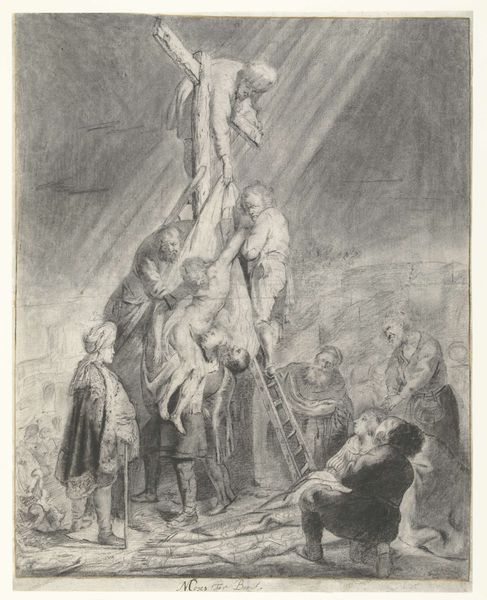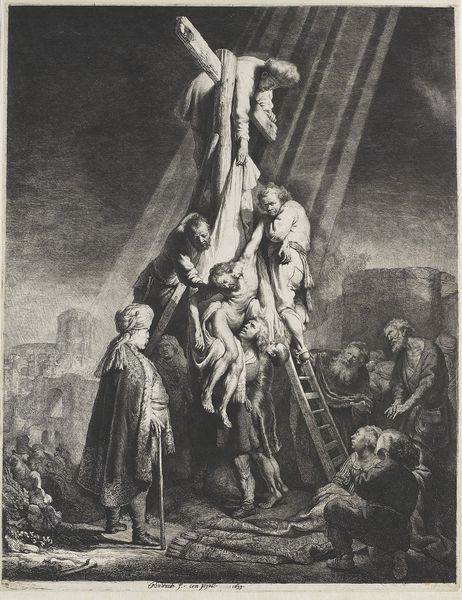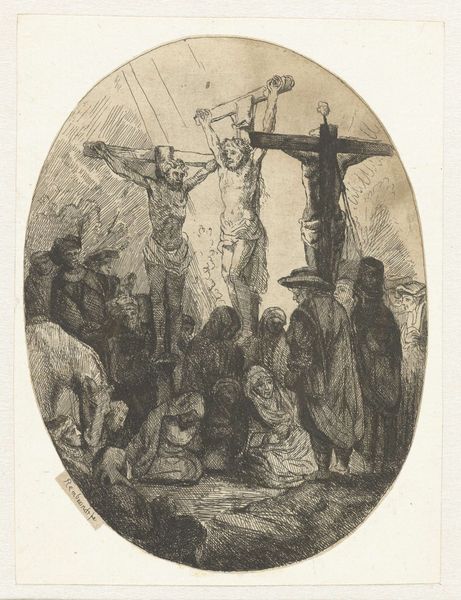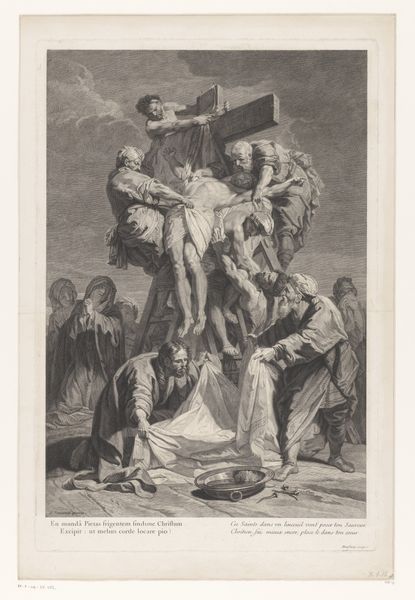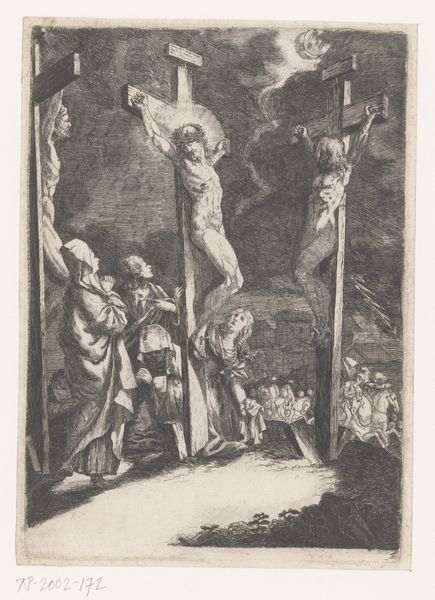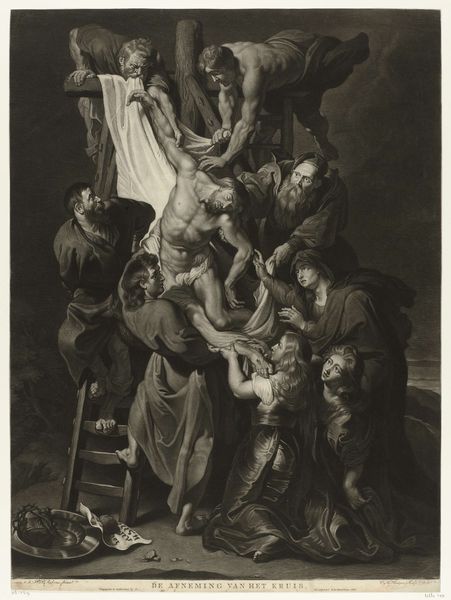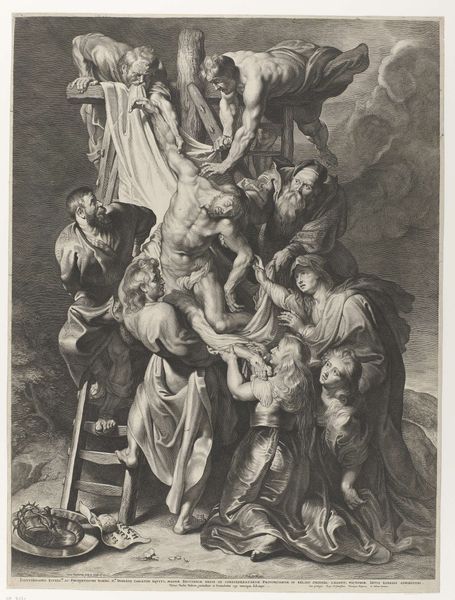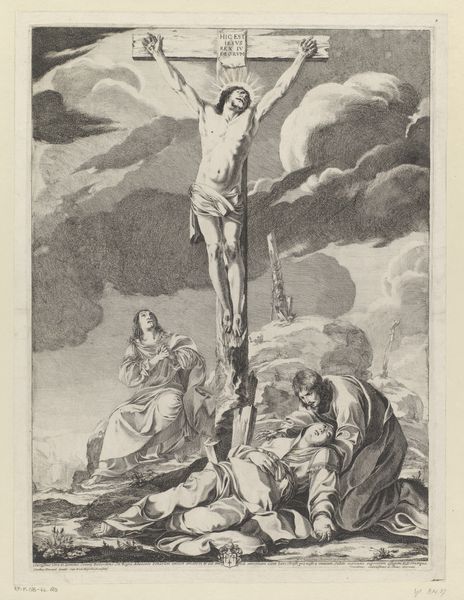
print, etching, engraving
#
narrative-art
#
baroque
# print
#
etching
#
charcoal drawing
#
figuration
#
history-painting
#
engraving
Dimensions: height 530 mm, width 410 mm
Copyright: Rijks Museum: Open Domain
Editor: So here we have "Kruisafname: tweede plaat" or "Descent from the Cross: second plate", an etching and engraving by Rembrandt van Rijn, dating probably from 1633. It’s overwhelmingly…dark. Claustrophobic even. What do you see when you look at this work? Curator: Dark indeed. But also powerfully lit, wouldn't you agree? Think of light not just as illumination, but as emotional revelation. See how the figures lowering Christ from the cross are bathed in it? They’re active, alive, wrestling with a terrible task. Yet at the base, others huddle in shadow, consumed by grief, lost in their private hell. Editor: Yes, that contrast is striking. The light feels almost…theatrical. Was Rembrandt consciously staging this? Curator: Staging... now that’s an interesting way to look at it! Remember, Rembrandt was a master storyteller. He uses light and shadow—chiaroscuro—to focus our attention. And not just on the *what*, but on the *how*…how does faith look in the face of immense sorrow? It’s not a clean, easy answer. Editor: I suppose I had imagined it to be…grander? It feels so intimate, like a secret glimpse into suffering. Curator: Exactly! Etching allows for that intimacy. Unlike grand historical paintings, prints were for smaller, private devotion. Rembrandt offers not a glorious spectacle but a human tragedy, made all the more visceral by the darkness pressing in. Almost feels as though he is dragging the viewers right in with the mourners below... wouldn't you say? Editor: I think you are right! Seeing the raw emotion captured like that is amazing, particularly the grieving faces in shadow - much to mull over. Curator: Well, it certainly gives new weight to the concept of 'divine darkness,' doesn't it?
Comments
No comments
Be the first to comment and join the conversation on the ultimate creative platform.

